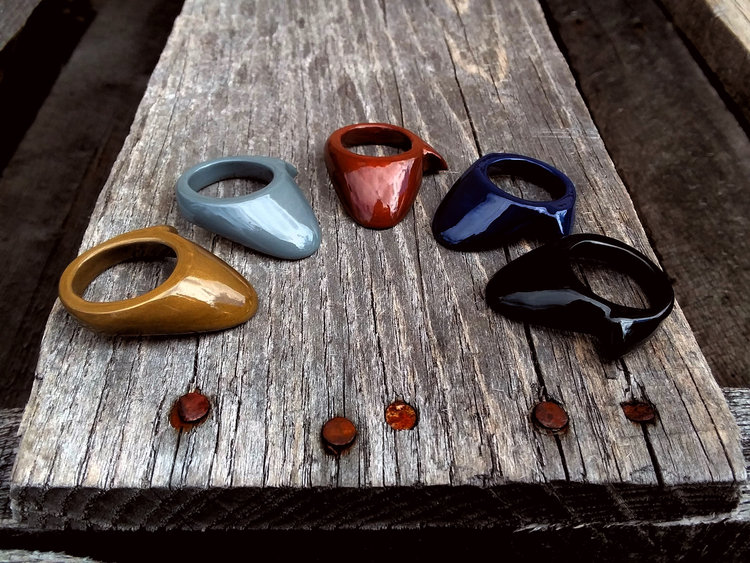Archery Thumb Rings – The Eastern Draw
Archery Thumb Rings: Eastern Draw
Alongside developments in bow materials and construction came advancements in techniques used to draw the bow. In archery, an Eastern draw, sometimes known as a Mongolian draw or thumb draw, utilizes the thumb and a varied combination of other digits. This article explores the thumb draw and the archery thumb rings used to protect the digit from the repetitive strain of drawing a bow.
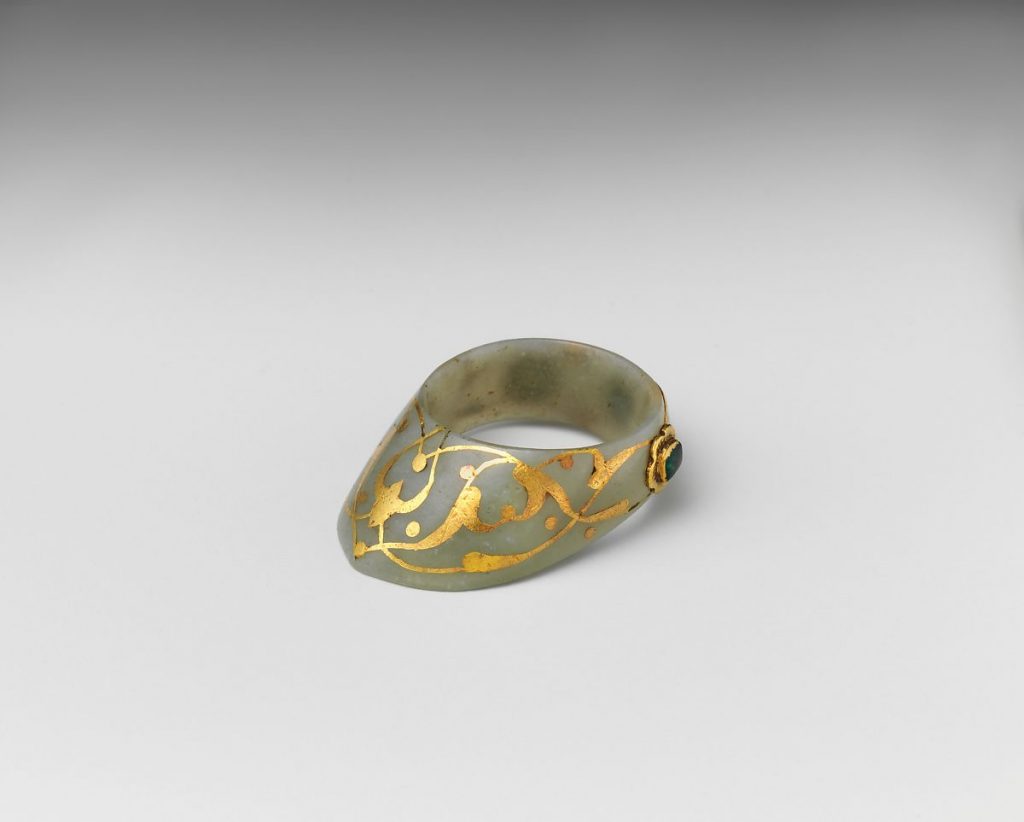
Purpose/Use
The Mediterranean or Western draw utilizes the index middle and ring finger to pull the string back. This action gives the string a clockwise twist and helps in keeping the arrow up against the bow. This is one reason why the arrow is placed on the left side of the bow (for a right-handed archer). The archer may also tilt the bow slightly in order the keep the arrow stable and held up against the bow (known as canting the bow).
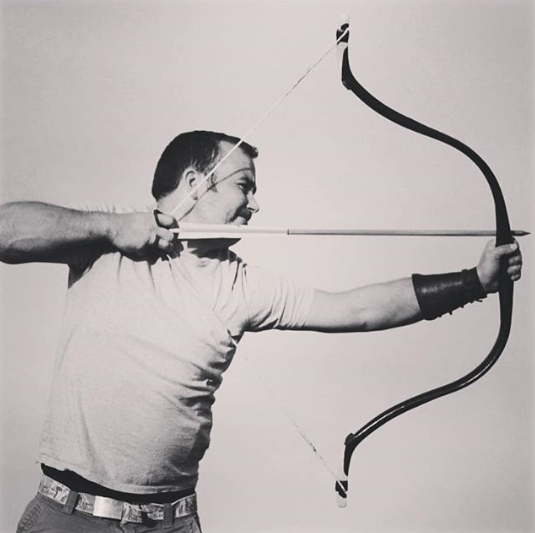
In a thumb draw, the arrow is placed on the right side of the bow (for a right-handed archer) and the string is rotated counterclockwise. The index finger of the draw hand puts pressure on the arrow to further assist in holding it in place. In the case of a solid archery thumb ring, having the string resting on a very small surface area allows for a very clean release. It is considerably more difficult to learn to shoot with a thumb ring than a Western draw. Below is an image of a Mediterranean Draw or a Western draw on the left, and a Thumb Draw on the right (sometimes called a Mongolian draw).
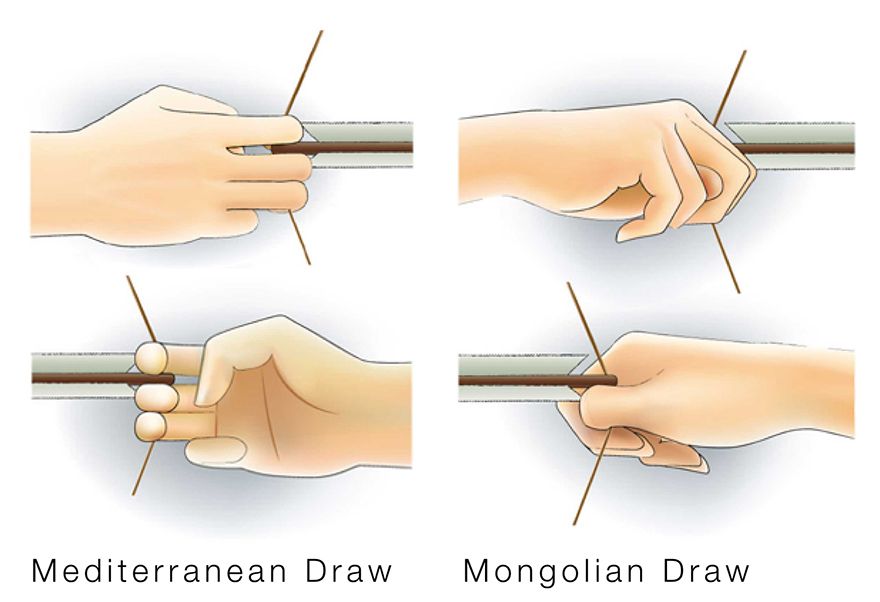
Having the ability to better hold the arrow in place is ideal for mounted archers who have to contend with the vibrations and movements of their mounts. A quiver is also typically placed on the right side of the mounted archer (assuming a right-handed archer). Arrows can quickly and conveniently be loaded from the right hip quiver to the right side of the bow. In the past, during battles involving mounted archers, having the ability to quickly and securely cycle ammunition could have been the difference between life and death.

History
Thumb rings or tabs of one type or another have been used since antiquity. Ancient Egyptian and Assyrian reliefs clearly depict the archers utilizing a thumb draw. Archery in the Far East has always heavily emphasized a thumb draw. Various designs and variations of thumb rings exist. Simple leather tabs may have evolved first, giving way to solid rings. In ancient China, large cylindrical thumb rings were used. Middle ages, very beautiful archery thumb rings were designed and made by Turks and Mughals.
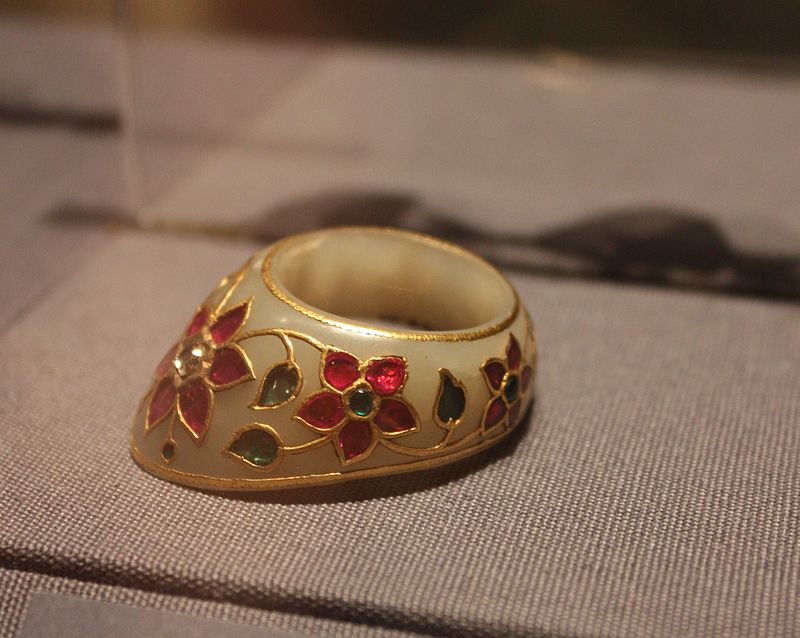
Variations/Materials
A variety of materials can be used to manufacture archery thumb rings. Traditional materials include leather (thumb tabs), bone, ivory, horn, wood, stone (jade), iron, brass, bronze, silver. Modern materials such as hard plastics are also used these days. The most common shape of archery thumb rings has an extended portion that fits up against the inside of the thumb and a small crease where the string rests, close to the inside of the joint. The Manchu (Chinese) and Tibetans utilize a simple cylindrical ring. In some cultures, archery thumb rings became very elaborate, artistic objects, inlaid with precious metals and jewels. In some cases so much so that they were unable to perform their original intended function and remained as jewelry and/or status symbols.

Turkish Thumb Rings
Traditional Turkish archery utilizes a thumb draw and solid thumb rings. Several beautiful specimens exist from the Ottoman period. Thumb rings, especially highly elaborate and bejeweled ones were symbols of high status. Zihgir, is the Turkish word for a thumb ring. They have the common shape of most thumb rings, with an elongated underside to protect the archer’s thumb.
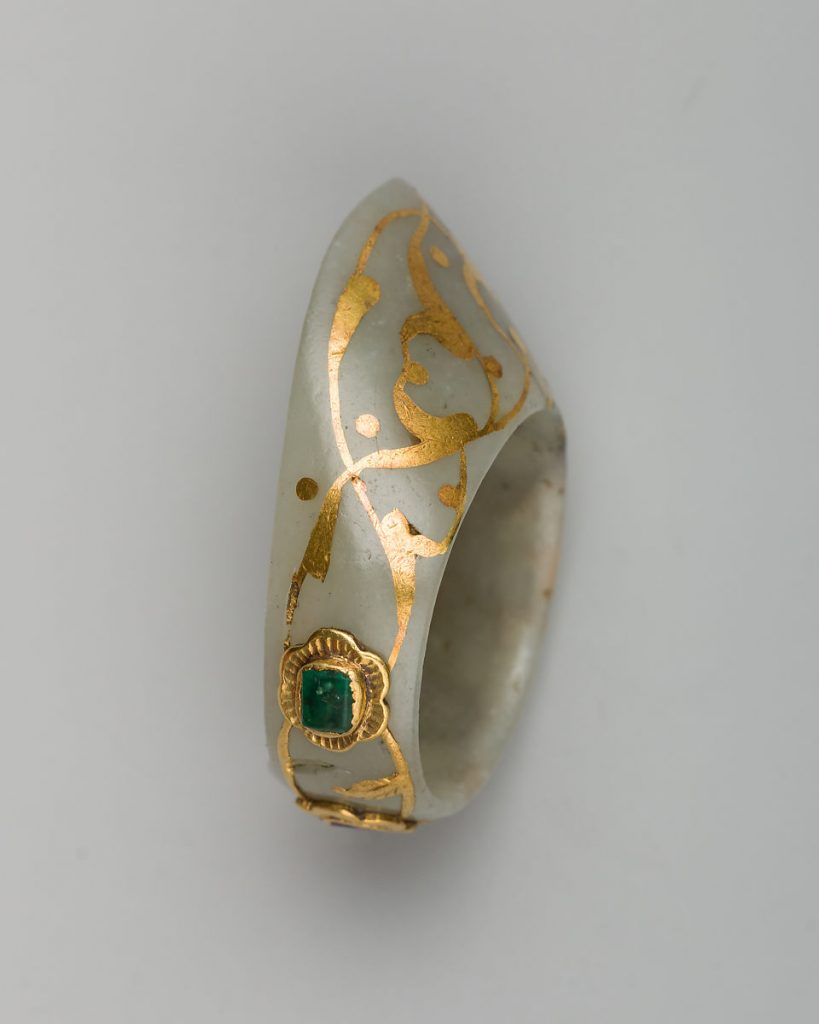
Manchu (Chinese) Thumb Rings
Thumb rings have been used in Asia since the Neolithic period (approximately 12,000 years ago to 1500 B.C.). Manchu and Tibetan thumb rings have a unique design in that they are cylindrical. They are fairly simple to design and built out of a variety of materials. The string typically rests on the bottom lip of the cylinder, close to the base of the thumb.
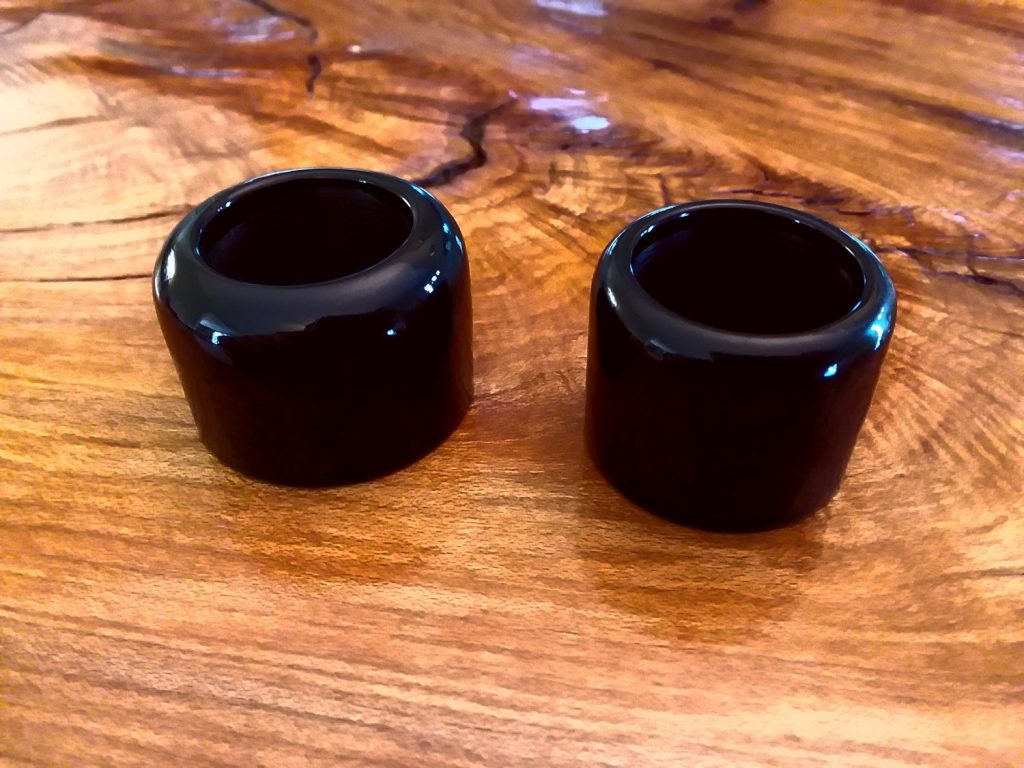
Korean Thumb Rings
Korean thumb rings come in two varieties, male and female. The female variety, known as a gakji in Korean, is very similar to other archery thumb rings like the Ottoman style Turkish ring. The male version, known as a Sugakji is somewhat unique among thumb rings in that it has a “surrogate thumb” or protrusion at the base of the ring. The ring itself is cylindrical, and the protrusion is what hooks the string, with the index finger curling over it for a secure hold.

How To Measure Archery Thumb Ring
Most manufacturers of archery thumb rings will require you to give measurements of your thumb to ensure a proper fit. Some manufacturers have their own custom ring sizers, similar to a jewelers ring sizer. Another measurement technique involves using a vernier caliper and measuring the thickness of the thumb in two directions. These numbers then correlate with ring size in a chart. Below is Vermil’s size chart to give you an example. Measurement 1 gives you the A, Measurement 2 gives B.

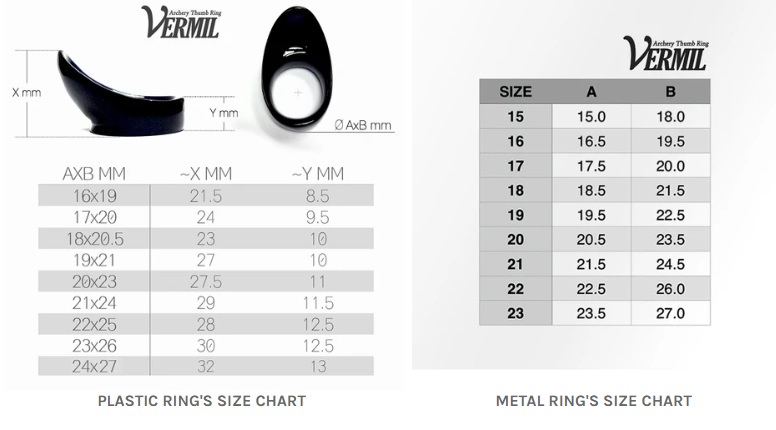
Archery Thumb Ring For Sale
Several manufacturers and artisans produce quality modern thumb rings. Some ring makers will customize to your exact thumb size. Made from traditional materials as well as modern.
Check out The Flying Hun for quality, hand-made, custom thumb rings.
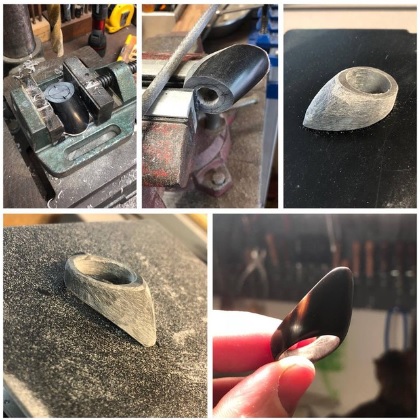
customthumbrings.com also has quality, customized rings in a wide range of styles and materials
